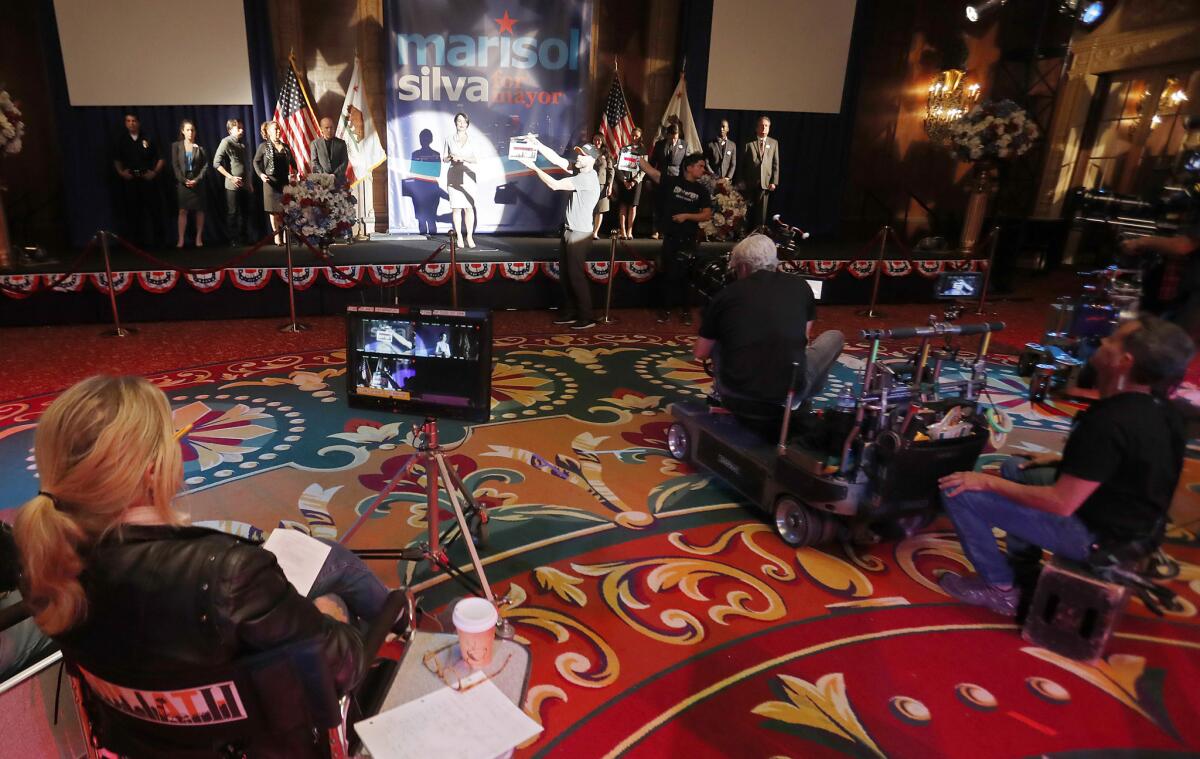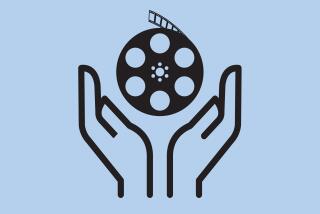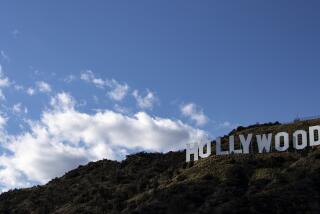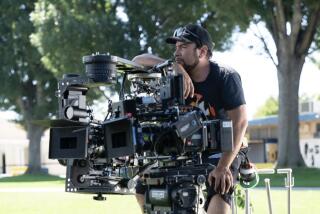Coronavirus is going to make film shoots more expensive. Here’s how

Hollywood is hoping that film shoots — shuttered more than two months ago because of the coronavirus crisis — will resume as early as mid-June. But once production gets going, there will be a new line item on studio budgets: COVID-19 prevention.
Studios and production companies will have to hire additional personnel, such as health and safety experts and sanitation crews. They’ll need to pay for additional equipment for cleaning sets, washing hands and checking temperatures. Work will go slower, and shoots will go longer. All of that adds up on the ledger.
Experts and executives estimate that enhanced cleaning and staffing for coronavirus prevention could add more than $1 million to a typical movie budget. On top of that, staggered shifts for crew, meant to minimize the number of people on set, could stretch what would normally be an eight-week shooting schedule to as many as 10 weeks. That would significantly increase expenses for major films, which can cost up to $400,000 a day to make.
“The budgets will definitely be going up for productions,” said Paul Swanson, a Los Angeles-based entertainment attorney at Loeb & Loeb. “If you have 50 days [of shooting], you might end up with 10 extra days. And depending on the production, that could be very costly.”
The prospect of rising production costs comes at a precarious time, when the industry is also facing a period of falling revenues. Wedbush Securities analyst Michael Pachter estimates the 2020 box office will end with $6 billion in ticket sales, down nearly 50% from last year.
New coronavirus spending will put an another financial strain on studios that were already keeping a tight lid on budgets because of the challenging theatrical market, even before movie houses closed in mid-March. Analysts also expect TV networks to try to cut programming costs because of the decline of advertising and acceleration of cord-cutting.
“It’s going to be a hit, for sure,” said one production executive who was not authorized to speak publicly and requested anonymity.
As the shutdown drags on, several countries have raised their flags, vying for production, touting their incentives, facilities and locations but also their low COVID-19 numbers, testing capabilities and safety measures.
Studio executives have been talking internally about how to manage costs by reducing spending in other areas, such as international travel, which will be challenging anyway in the current environment. Some say they’ll be able to adapt with smaller crews and casts. Companies may even boost efforts to lobby state officials for expanded tax incentives that would allow more movies to shoot in California.
“It’s going to vary from project to project,” said Jesse Sisgold, president and chief operating officer of Santa Monica-based studio Skydance Media. The company’s productions include the relatively contained Netflix comedy series “Grace and Frankie,” along with expansive sci-fi epics such as the upcoming “Foundation” series for Apple TV+. “We’re still looking at the same budgets we did prior to COVID, but we’re just shuffling costs within those budgets.”
It remains unclear when productions will be able to resume locally. Los Angeles County officials recently began gradually easing restrictions on businesses to get the economy moving. Studio sources say they could begin getting back in gear as soon as next month in the U.S., and are already fielding inquiries from states that have reopened more aggressively, such as Georgia. Productions are currently underway in countries including Iceland and South Korea.
Still, there’s little doubt the coronavirus will add extra challenges for companies as they allocate funds. Plans are “obviously a work in progress,” production controller Nour Dardari, who has worked on blockbusters including “Star Wars: The Rise of Skywalker,” said in a recent webinar hosted by production services firm Entertainment Partners. “But we can definitely see there will be ... some allowance to make sure everyone is safe.”
When crews go back to work in the states, how they operate will have changed dramatically. To manage the on-set health and safety measures, studios are expected to hire “COVID coordinators” who will lead staffs of 10 to 15 people on smaller movies, according to one production source. For bigger shoots, that staff could be 30 people or more.
Call times will be coordinated so that certain teams, such as set dressers, come to the set in staggered shifts to reduce crowding. In some cases, casts and crews may be quarantined before a shoot begins. Sets may be built and left to sit for several days before the filmmaking teams can come in. All of that means more time and money.
“What will be costly is the whole rearrangement of the process,” said Los Angeles entertainment attorney Kenneth Kleinberg, of Kleinberg Lange.
Crew members will also work shorter days because people are more susceptible to illness when they’re exhausted. The industry may move to so-called French hours, in which crew members work up to 10 hours on set instead of pulling 14-hour days. That could extend the length of shoots.
Mark Gill, chief executive of independent film company Solstice Studios, said pay for workers will have to change in order to prevent costs from ballooning. Crew members, he said, would be paid the same hourly wage, but their hours would be stretched over more days of filming. “This is the only way labor costs won’t rise,” Gill said. “And if they do rise, many films will become un-financeable.”
The coronavirus shut down Hollywood production. How much will insurance companies pay to help studios cover their losses?
Studios’ insurance costs are also likely to rise because of the risk of having to pause shooting for weeks when a member of the cast or crew gets sick. Because insurance companies have begun excluding coronavirus from their policies, major studios will probably have to bear the brunt of future shutdowns. Legal costs may also increase to cover potential litigation if employees become ill.
So-called intimacy coordinators, who work with actors to ensure appropriate behavior during sex scenes, may be called upon to help performers feel comfortable during other types of shooting that require people to be near each other, said Jody Simon, an entertainment attorney at Fox Rothschild. “They’re going to be increasingly important going forward,” Simon said.
Some of the more mundane parts of the filmmaking process will have to change, as well, including craft services and security. Instead of long buffet lines for lunch breaks, studios anticipate ordering boxed lunches from catering companies. Sets will have check-in stations to perform health screenings for people coming to work, which may include temperature checks.
For a century-old industry such as Hollywood, changing longstanding ways of doing the physical work is a “puzzle and a challenge,” said Yolanda Cochran, Nickelodeon’s senior vice president of production.
“Other than some technological advances, the approach to production has been the same for decades,” Cochran said during the web panel on production last week. “Getting people to think in a different way can be a challenge. Unfortunately we now have [a situation] that’s unavoidable, and we’re going to have to problem-solve.”
More to Read
Inside the business of entertainment
The Wide Shot brings you news, analysis and insights on everything from streaming wars to production — and what it all means for the future.
You may occasionally receive promotional content from the Los Angeles Times.











